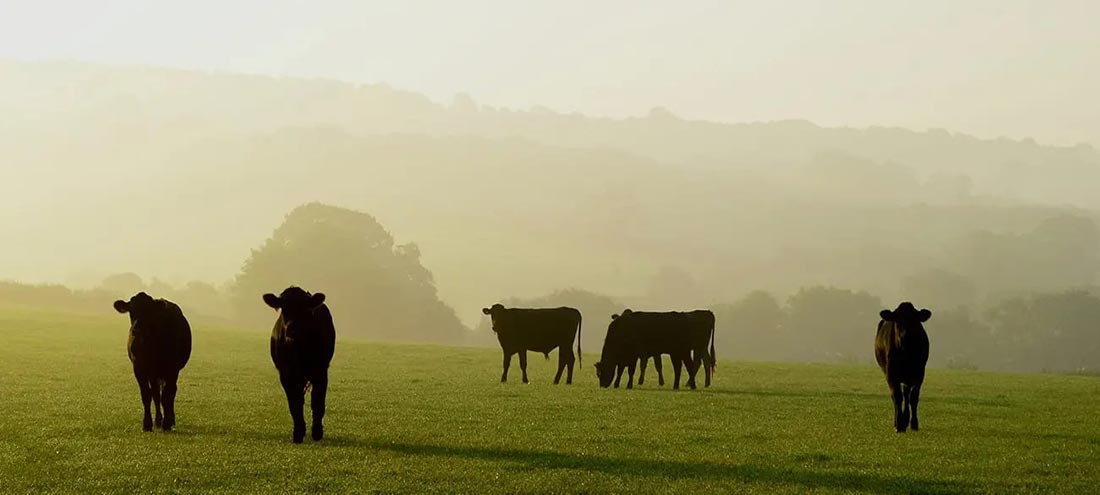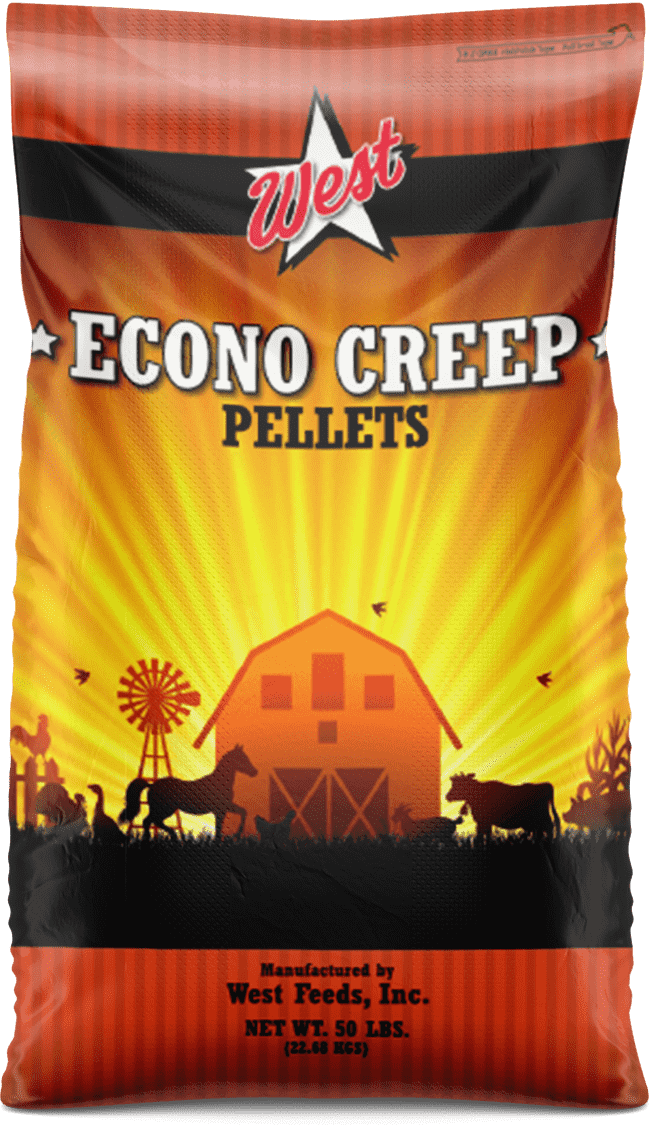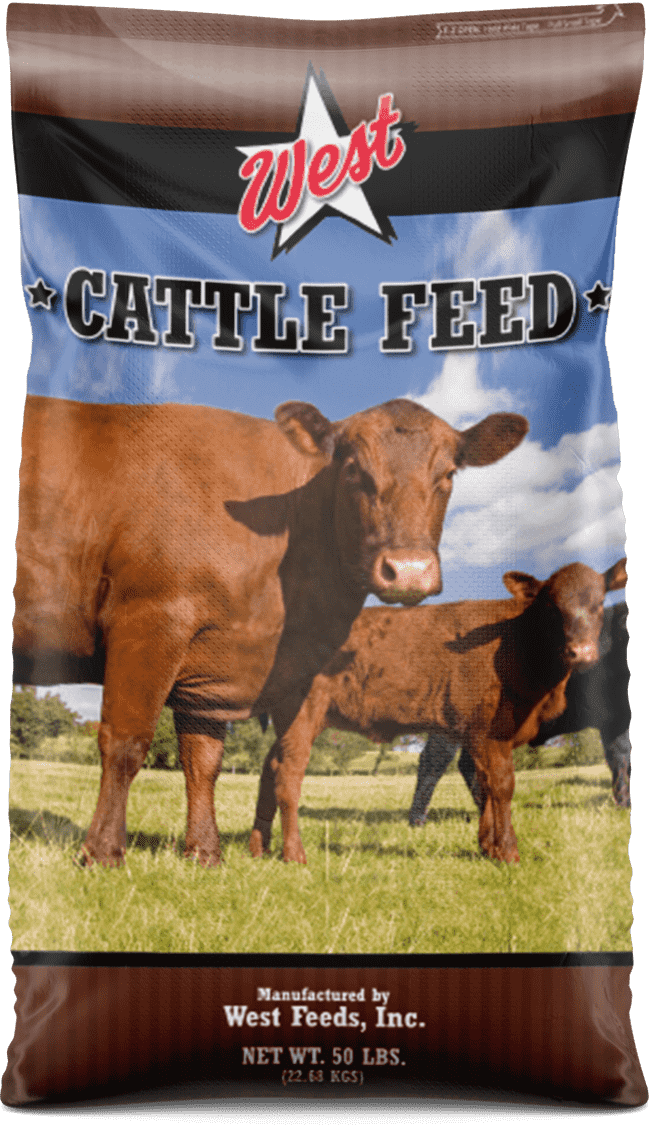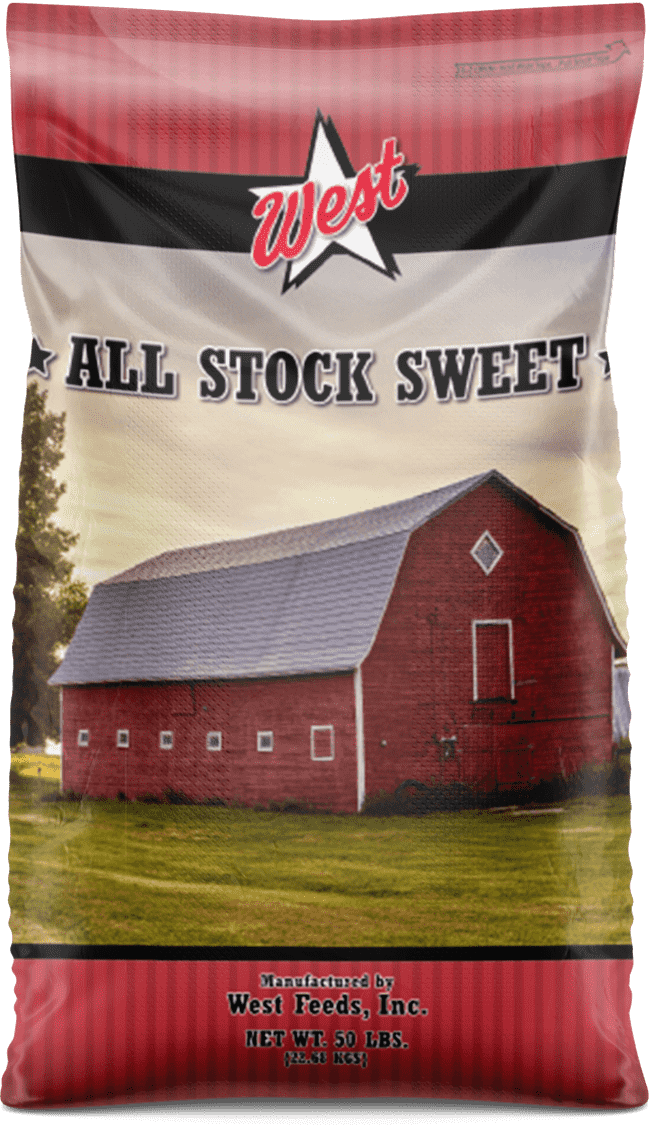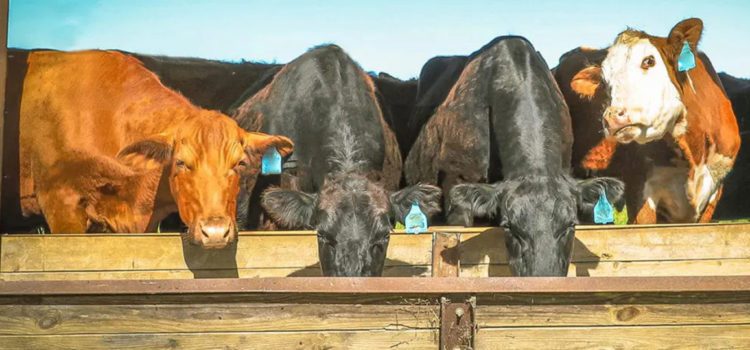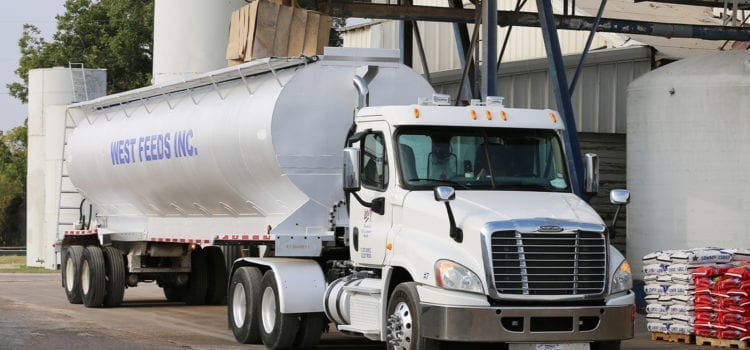If you have a cattle herd, a body condition score (BCS) is one of the best ways to determine your cows’ nutritional needs and strategically increase their value. What is a body condition score? And how do you apply it?
Body condition scoring is actually pretty simple. “Body condition scoring” is just a fancy way of saying, “figuring out how much fat is on your cows’ bodies.”
Knowing the body condition of your cows is incredibly useful. It’s not just helpful for determining the quantity and type of feed your cows need but also helps you adjust their feed at certain times of the year to boost cattle production.
A cow’s BCS is directly related to how likely cows are to become pregnant and the health of their calves.
Studies show that underweight cows are associated with decreased pregnancy rates by 30%, giving birth to weak calves, having low-quality colostrum, and reduced milk production; all resulting in significantly lower income per cow.
How is Body Condition Evaluated?
Texas A&M AgriLife Extension uses the following scoring system for the body condition of cows. It runs from 1 to 9, with BCS 1 considered severely emaciated and BCS 9 considered obese. The ideal BCS range for cows—from weaning to breeding—is BCS 5 or 6.
The main ways in which you determine an individual cow’s body condition is by combining a visual assessment (looking at the cow) with palpation (running your hand along the cow’s body).
Before we get into the specifics, you’ll need to know a thing or two about a cow’s body.
Relevant Parts of a Cow’s Body
Body condition scoring can’t be done without looking at the brisket, ribs, backbone, hooks, tail head, and pin bones.
- Of course, the brisket is the muscular area on a cow’s lower chest that supports much of their body weight. Fat tends to accumulate here, making it helpful to assess your cow’s body condition.
- Ribs. Look to see how many ribs from the last half of the rib cage are evident to visual appraisal.
- The backbone includes the spinous processes and transverse processes. The spinous processes are sharp points that protrude from the top of the vertebrae, while transverse processes are sharp points that come out of the sides of the vertebrae.
- Hooks – another name for the cow’s hip bones.
- The tail head is essential for evaluating body condition as it will either be covered in fat or not.
- The pin bones are two raised areas surrounding the cow’s tail head.
See the image below for a visual representation of these areas and their general location on a cow’s body.
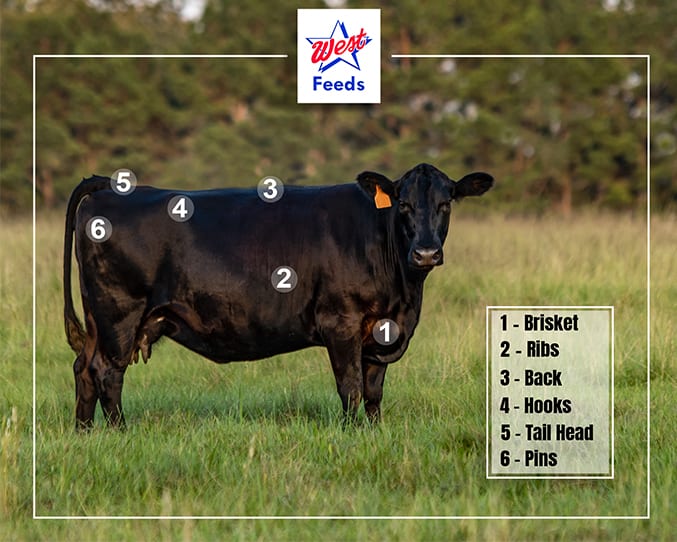
How to Assess a Cow’s Body Condition
You can get a good idea of your cow’s body condition just by looking at it. You’ll surely be able to tell if the cow is underweight or overweight with a quick visual scan. That being said, it’s still important to assess the animal’s body condition through palpation, especially if their hair is long and covering their bones.
The areas you want to pay special attention to are the ribs, tailhead, and backbone. Be on the lookout for:
- Areas which are sharp and boney to the touch: This means the cow has a lower BCS.
- Areas which are soft and fatty: This means the cow has a higher BCS.
If you have a hard time distinguishing, say, between BCS 2 from BCS 3, don’t worry too much! When you’re first getting started with body condition scoring, it’s ok to generalize a bit.
For example, you can put cows from BCS 1–3 in a “thin” group, cows of BCS 8–9 into a “fat” group (don’t worry, you won’t hurt their feelings), and cows of BCS 5–7 into an “average” or “optimal” group.
For illustrative purposes of a cow’s body condition score (BCS), here are some examples from PennState Extension:

When to Assess Your Herd’s Body Condition
Body condition scoring is especially important as it relates to reproduction. This is why doing it at certain times in your cows’ lives can increase your business’s profitability.
Important times to assess cows’ body conditions are:
- During weaning
- 60 days before calving
- At calving time
- At the beginning of the breeding season
- Late summer and early fall
Cows with a BCS of 1 to 4 at calving time do not produce as much colostrum or milk as those with a BCS of 5 or higher, so their calves will get off to a rockier start. Research also shows that the time between calving and entering heat is longer for cows with a BCS of 5. Ideally, a cow should rebreed 80–85 days after giving birth.
Knowing each cow’s BCS score allows you to sort cows by their BCS scores, ensuring each group gets the proper nutrition.
For example, say you have a group of thin cows 60 days before calving. You’ll want to increase their fat levels by giving them more feed so that, by the time they give birth, their colostrum and milk production levels will be optimal.
Final Thoughts
Body condition really is something you should keep tabs on. Overall, it’s not that difficult to do, doesn’t need to be done that often, and will help you increase productivity. In fact, if you’re not doing it, you can bet your operation is not being run as efficiently as it could be.

